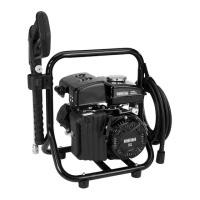Why Northern Tool and Equipment Ironton engine will not start?
- BBrandi CannonAug 4, 2025
If your Northern Tool and Equipment Pressure Washer engine won't start, there are several potential reasons. First, check the oil level, and fill it to the correct level if it's low. Ensure the engine is not in the 'off' position. If the engine is cold, use the choke to help it start. Make sure there is enough fuel in the tank and that the fuel shutoff valve is open. Finally, verify that the spark plug wire is securely attached to the spark plug.

